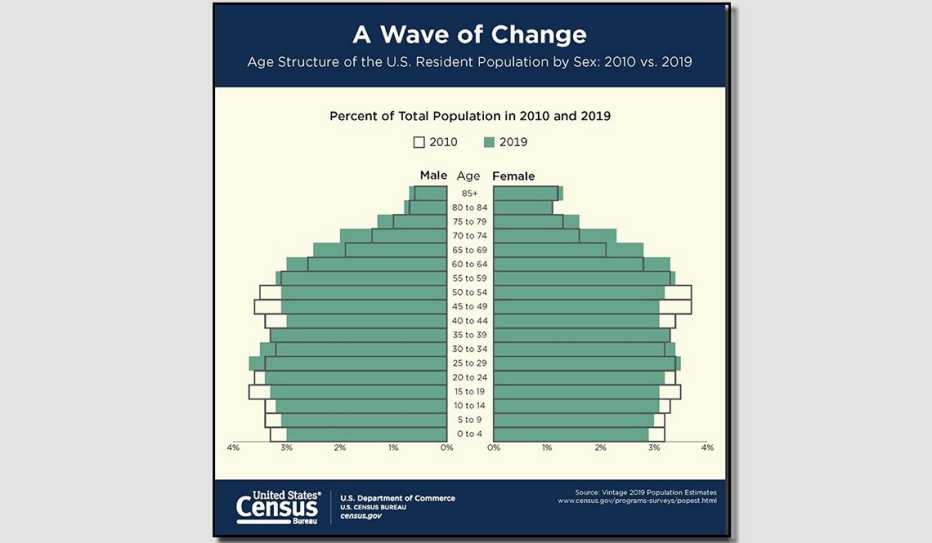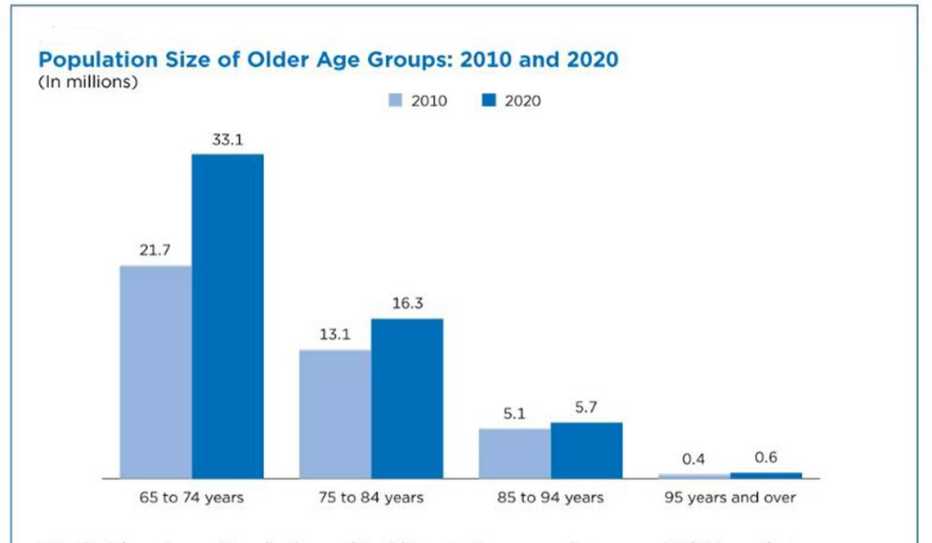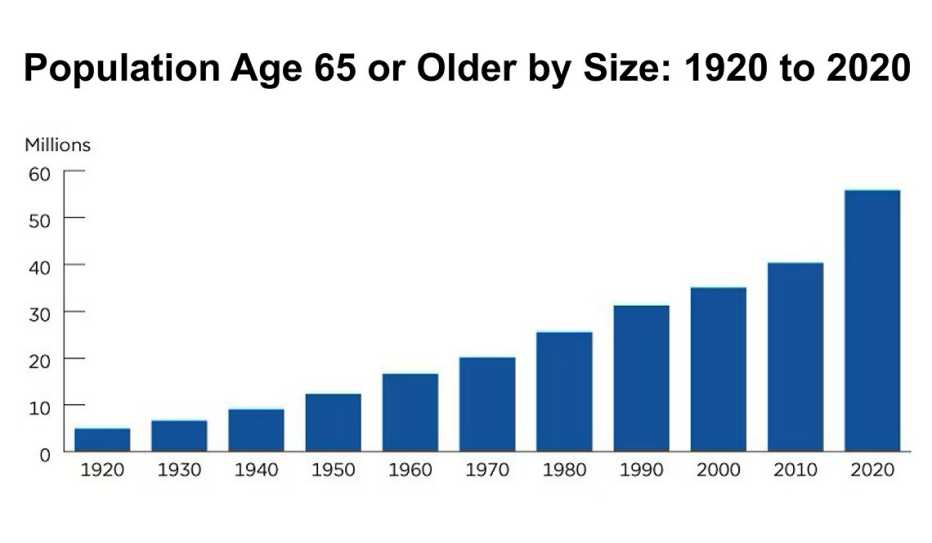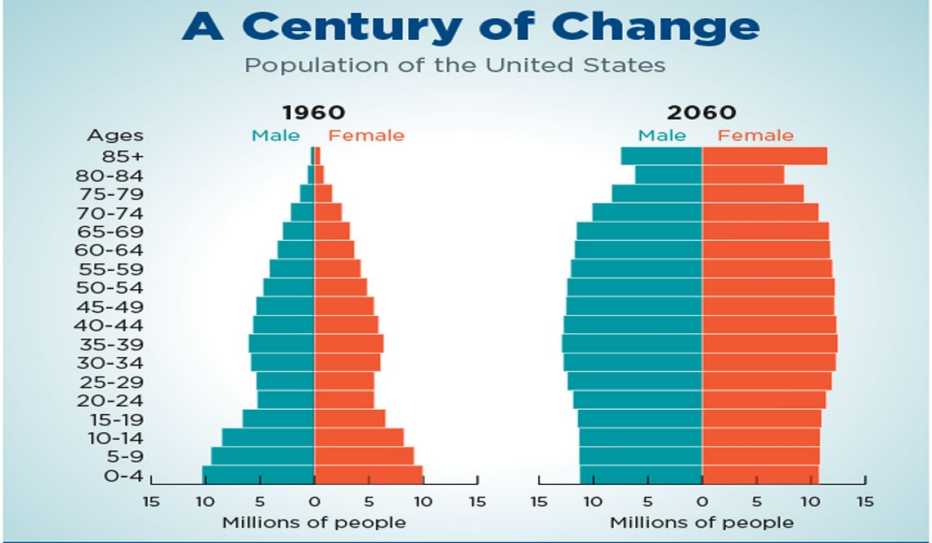AARP Hearing Center


America's Population is Old, But We're Not the Oldest
Japan has the largest share (28.5 percent) of older residents. In 2020, the United States ranked 34th among its peer nations with 16.8 percent of residents being age 65 or older. Learn More
Florida Is Not the Oldest State
In 2020, Maine had the highest share (21.8 percent) of people age 65 or older, followed by Florida (21.2 percent) and Vermont (20.6 percent). Learn More
According to the U.S. Census Bureau
- In 2020, the United States population was older and had fewer children under age 5 than in 2010 or 2000. Learn More
- In fact, the nation's population age 65-plus grew nearly five times faster than the total population between 1920 and 2020. Learn More
- In 2020, 1 in 6 people in the U.S. were 65 or older. (In 1920, the ratio was 1 in 20 people.) Learn More
- In 2020, the 65 to 74 age group represented more than half of the 65-plus population. The population of people age 95 or older increased from about 425,000 in 2010 to 631,000 in 2020. Learn More
- By 2030, 1 in 5 people in the United States — or 20 percent of the nation's population — will be age 65 or older. Learn More
- By 2034, people age 65 or over will outnumber children age 17 or younger. Learn More
1. The National Median Age: 38.8

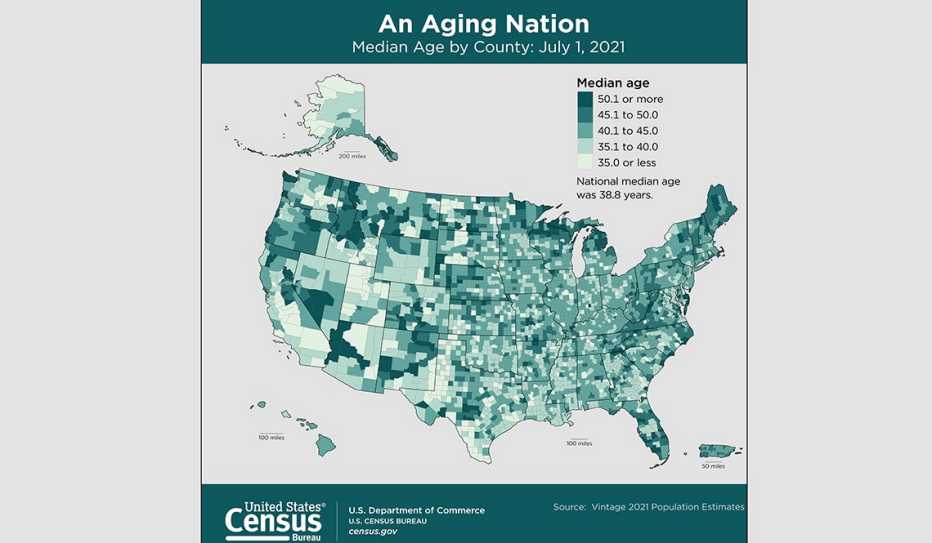
2. Older Adults Will Soon Outnumber Children

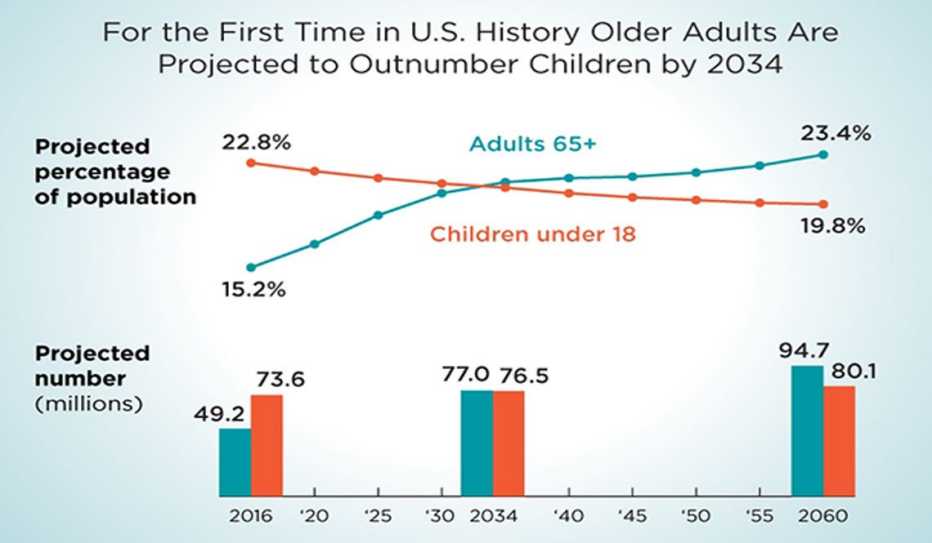
3. Data About the 65+ Population Shows ...


4. Data About the 55+ Population Shows ...


5. The 65+ Population Significantly Increased Between 2010 and 2019


6. The 65+ Population = Many Old Adults

